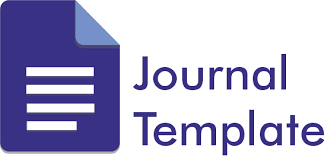EXPLORING STUDENTS’ SPEAKING ABILITY AT MUHAMMADIYAH SORONG UNIVERSITY (UMS)
DOI:
https://doi.org/10.33506/jq.v6i1.250Keywords:
language, speaking, speaking abilityAbstract
This research tried to find out how is students’ speaking ability at University Muhammadiyah Sorong. This research used qualitative method and descriptive design. The population is students of English department at University of Muhammadiyah Sorong in 2013/2014 academic year. The writer took only 30 students randomly of fifth semester as the sample of this research. The writer also prepared some topics that chosen by the students and used voice recorder as the research instruments to measure students’ speaking ability.The result of this research revealed that the students’ speaking ability at University of Muhammadiyah Sorong was poor. The detail aspect of speaking occurred, Pronunciation was good, Grammar was fair, Vocabulary was fair, Fluency was poor, and Comprehension was poor which based on 30 respondents of fifth semester of English Education Department at University of Muhammadiyah Sorong.References
Asmani, Jamal Ma’mur. 2011. Tips Pintar PTK: Penelitian Tindakan Kelas. Jakarta Selatan: Laksana.
Baker, J. & Westrup H. 2003. Essential Speaking Skills: A Handbook for English Language Teachers. London: Continuum.
Bashir, M., et. al. 2011. Factor Effecting Students’ English Speaking Skills. British Journal of Arts and Social Sciences, (online) Vol. II No.1. (http://www.bjournal.co.uk/BJASS.aspx, April 16, 2013).
Echols, John M and Hassan Shadily. 2006. An English-Indonesian Dictionary. Jakarta: PT. Gramedia Pustaka Utama.
Evans, Tony Dudley and Maggie Jo St John. 1998. Developments in English for Specific Purposes. United Kingdom: Cambridge University Press.
Haris, David P. 1969. Testing English as a Second Language. New York: McGraw- Hill.
Harmer, Jeremy. 2007. How to Teach English.Shanghai: Longman Group.
Hue, Nguyen Minh. 2010. Encouraging Reluctant ESL/EFL Learners to Speak in the Classroom. The Internet TESL Journal, (online) Vol. XVI No.3. (http://iteslj.org, April 12, 2013).
Kayi, Hayriye. 2006. Teaching Speaking: Activities to Promote Speaking in a Second Language. The Internet TESL Journal, (online) Vol. XII No.11. (http://iteslj.org, April 12, 2013).
Palmer, Erik. 2011. Well Spoken: Teaching Speaking to All Students. New York: Stenhouse Publishers.
Richards, Jack C. & Willy A. Renandya. Methodology in English Teaching. New York: Cambridge University.
Rowan, Paul. 2007. Building Speaking Skills by Creating ‘Old-time Radio’ Show. The Internet TESL Journal, (online) Vol. XIII No.1. (http://iteslj.org, April 12, 2013).
Shumin, Kang. 2002. Factors to Consider: Developing Adult EFL Students’ Speaking Abilities. In Richards, Jack C. & Willy A. Renandya. Methodology in English Teaching. New York: Cambridge University Press, pp. 205- 211.
Sudjana, Nana. 1989. Penilaian Hasil Proses Belajar Mengajar. Bandung: PT. Remaja Rosdakarya.
Tsang, W. K., & Matilda Wong. 2002. Conversational English: An Interactive, Collaborative, and Reflective Approach. In Richards, J.C. & Willy A. Renandya (eds.), Methodology in English Teaching. New York: Cambridge University Press, pp. 212-224.
Widiati, Utami & Bambang Y. C. 2006. “The Teaching of EFL Speaking in the Indonesian Context: The State of the Artâ€. Bahasa dan Seni,
Downloads
Published
How to Cite
Issue
Section
License
The article copyright is owned by the author and Qalam: Jurnal Ilmu Kependidikan

This work is licensed under a Creative Commons Attribution-ShareAlike 4.0 International License.




